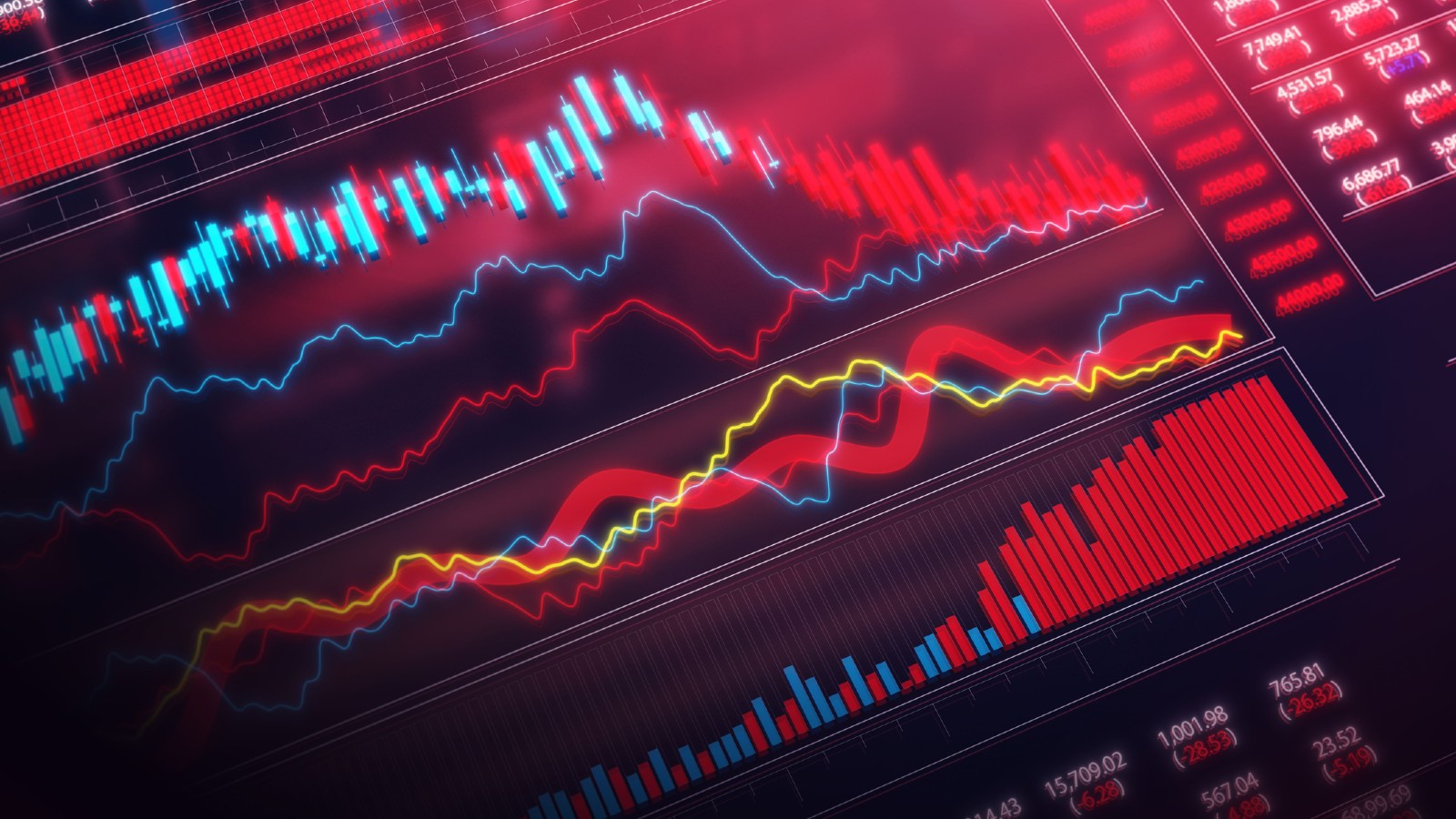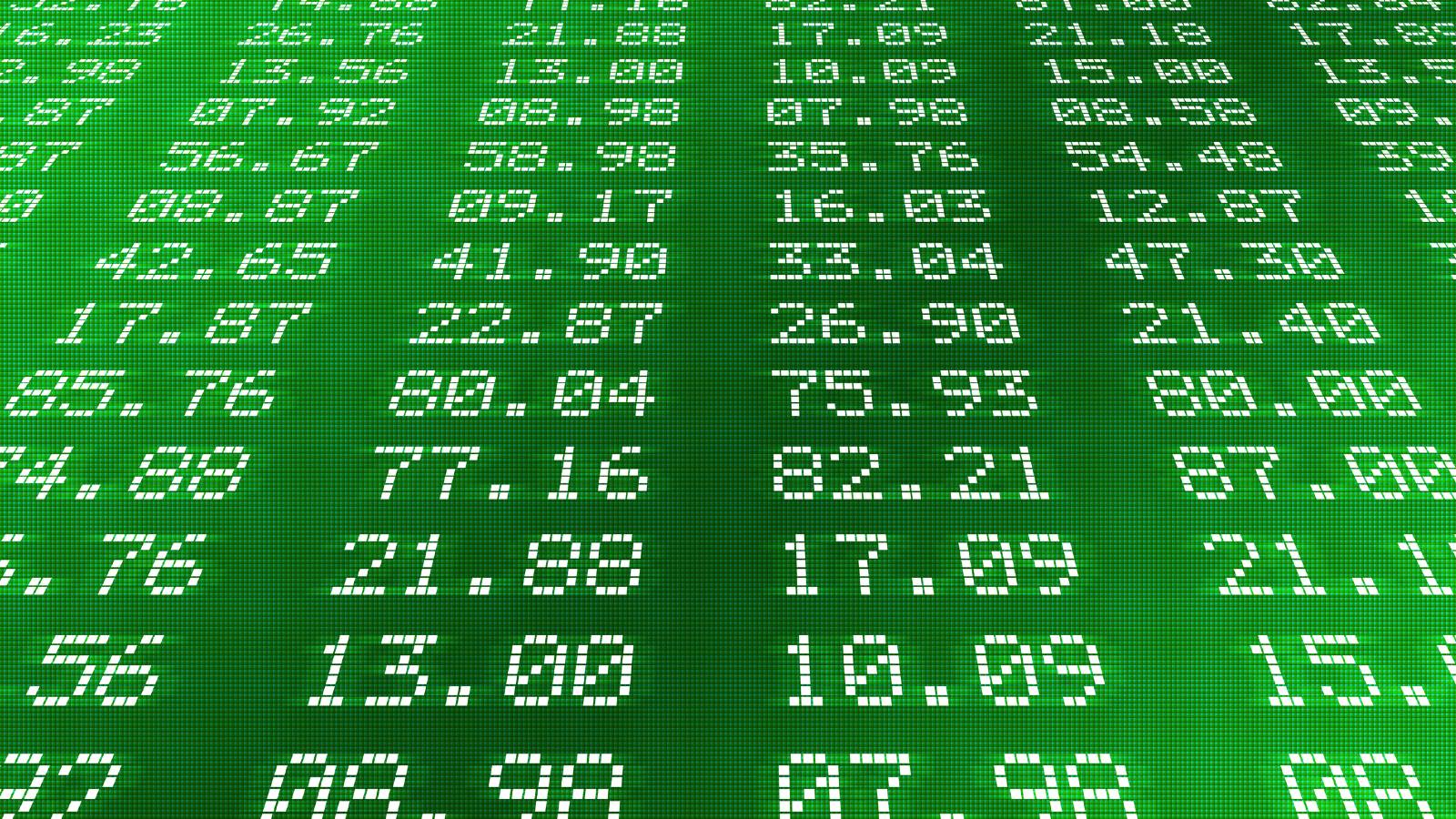8 Blue-Chip Stocks to Buy Now
Shares of big, high-quality companies have been seriously neglected. These stocks are cheap and attractive.

Shareholders of big, well-known companies -- often called blue chips -- have been singing the blues lately. These stocks, the darlings of Wall Street in the 1990s, have lagged the market since the start of the 21st century, even as large companies have become increasingly healthy, profitable and generous with their excess cash. And although big-capitalization stocks did outpace their small-company brethren during the 2011 downturn, they didn’t exactly shine. They simply lost a little less.
Seasoned professionals view the big-cap segment as a bargain hunter’s paradise, but most investors are shunning the stocks largely out of fear, says James Stack, president of Stack Financial Management and publisher of the InvesTech Market Analyst newsletter: “Investors are worried about everything -- soaring deficits, runaway government spending, a possible Greek default, the break-up of the European Union. Pick the fear du jour.”
In fact, such concerns influence investor attitudes toward all stocks. But the giants face unique problems. For starters, big companies are more exposed to the world’s woes than small companies, which are less likely to sell overseas or maintain operations abroad. When the domestic economy slumbers, the goliaths are too big to squeeze themselves into the safer niche areas in which small companies can hide out and flourish.

Sign up for Kiplinger’s Free E-Newsletters
Profit and prosper with the best of expert advice on investing, taxes, retirement, personal finance and more - straight to your e-mail.
Profit and prosper with the best of expert advice - straight to your e-mail.
It’s also harder for behemoths to generate the kind of growth that excites investors (Apple being a notable exception to the rule). After all, Chipotle Mexican Grill -- a Wall Street darling that went public in 2006 -- needs to produce only $18 million in additional profits to boost earnings by 10%. But for Chevron to do the same, it must lift profits by $1.9 billion -- roughly 100 times more. Because stock prices tend to reflect anticipated future growth, among other things, Chipotle sells at 46 times earnings, while Chevron’s price-earnings ratio is just 7. Meanwhile, Chevron is among a group of big companies that pay dividends so rich they make Treasury yields look anemic. Snap up shares of these giants and you can calmly collect those checks while you wait for better times.
Here are eight battered blue chips, clustered in three neglected areas, that have the potential to deliver pleasing results. All sell for less than 10 times estimated 2012 earnings per share (prices and other data are through October 7).
Defense-Stock Bargains
Investors in defense contractors, worried that Congress’s deficit-cutting “super committee” may slash military spending, are running scared. The average P/E for stocks in the sector is 25% to 30% below the overall market’s P/E, says Citigroup Global Markets analyst Jason Gursky. That’s similar to how defense stocks were valued in the early 1990s, when the Cold War was coming to an end and the government was slowing military expenditures.
But there are important differences today, says Gursky. At the end of the Cold War, the U.S. had just gone through a spending cycle that updated the nation’s arsenal. Thus, there was little need to keep buying warships, tanks and missiles. Today, “we have a bunch of aging fighter jets, aging tanks, aging ships,” Gursky says. “We have a hardware-refresh cycle that we need to go through over the next five years.”
Even if the defense budget experiences little growth, some top aerospace companies will continue to get lucrative work. Most likely to benefit is Lockheed Martin (symbol LMT), which is the lead contractor on the new F-35 fighter jet. Existing orders for this stealth fighter are likely to keep the Bethesda, Md., company humming for several years. In addition, the company has a well-positioned space satellite business that can pick up some of the slack if government contracting slows. Couple that with the company’s long-standing policy to share the wealth, and you’ve got the potential for a great long-term return. In September, Lockheed hiked its dividend by 33% and announced plans to buy back $2.5 billion of its own stock. The stock now yields a rich 5.4%.
Raytheon (RTN), a maker of missile-defense systems, is also likely to do well -- and it’s a screaming bargain, Gursky says. Although domestic demand for its systems is likely to decline, the Waltham, Mass., company generates about one-fourth of its business overseas, where demand remains brisk. Gursky thinks Raytheon shares will sell for $62 in a year -- up 50% from today’s price. Meanwhile, the company’s annual dividend of $1.72 per share provides a 4.2% yield.
Northrop Grumman (NOC) has a big piece of the F-35 contract, too. And the Los Angeles company is one of two key players in the unmanned drone business -- an area that’s getting increasing attention following the fatal strike on al-Qaeda recruiter Anwar al-Awlaki in Yemen (the other major participant, General Atomics, is privately held). The Value Line Investment Survey credits Northrop with having a “vast” product portfolio and gives the company its highest rating for financial strength. Analysts expect only modest earnings growth in 2012 (about 3%), but Gursky thinks the stock could nonetheless jump nearly 50% in the coming year, once Uncle Sam’s budget-cutting plans come into clearer focus.
Big Opportunities in Big Oil
Shares of the nation’s biggest energy companies have swooned lately thanks to falling oil and gas prices. But if you’re looking for a way to defend your portfolio from volatile markets, you may want to invest some cash in energy giants. Even if oil prices stay low for an extended period -- not a likely eventuality, in our view -- the major energy companies are strong enough to support generous dividend payments and buy back stock. And, notes Laurence Kandel, vice-president at Obermeyer Asset Management, a Colorado investment firm, in tough economic times it’s smart to focus on products that people need, rather than those that they want.
Eric Vermulm, a portfolio manager at Stack Financial Management, in Whitefish, Mont., prefers Houston-based ConocoPhillips (COP), partly because it plans to spin off its pipelines and refining operations in early 2012. That will underscore the value of the exploration company that remains and that Vermulm believes is underappreciated by Wall Street. After that spinoff, he figures, the stock of the remaining company will sport a head-turning dividend yield of 6%.
Bernie Williams, vice-president of discretionary money management at USAA, likes ExxonMobil (XOM), based in Irving, Tex., because it’s much less volatile than the market as a whole, making it a relatively safe way to invest in oil. Exxon, one of only four non-financial U.S. companies with a coveted triple-A debt rating, has boosted its dividend eight consecutive years, and the company is buying back prodigious quantities of its shares. Standard & Poor’s, which rates Exxon’s stock a strong buy, says the company has the deep pockets and technological know-how to keep increasing its energy reserves.
Pavel Molchanov, a Raymond James analyst in Houston, favors Chevron (CVX) because it has the least exposure to natural gas, which is in oversupply, and the most to oil. Headquartered in San Ramon, Cal., Chevron is strong in the Asia-Pacific region, which is growing rapidly. Molchanov expects Chevron to sell for $121 within a year, up nearly 30% from today’s prices.
Deals in Tech Wallflowers
Few high-quality, large-cap stocks are as widely held -- and as widely scorned --as Microsoft (MSFT). The software giant fell from grace when the tech bubble burst in 2000, and it’s never managed to regain even a modicum of its former glory.
Trend-conscious Wall Street has, in fact, turned its back on makers of personal-computer hardware and software, believing that smart phones and tablet computers, such as Apple’s iPad, will replace much of the PC business over time. But technology experts maintain that PC sales are unlikely to fall off a cliff and that Microsoft’s Windows is still the undisputed leader in PC operating systems. Moreover, the Redmond, Wash., company has a robust business-services division and a rapidly growing entertainment arm.
Because of its enormous size, it’s unlikely that Microsoft will deliver the hyper-growth that marked its early years. Analysts, on average, expect earnings to grow 10% annualized over the next three to five years (in today’s tepid economy, that’s not bad at all). But analysts have been underestimating Microsoft for years. In the fiscal year that ended last June, for example, the firm earned $23.2 billion -- a 23% increase from the previous year. Moreover, Vermulm thinks it’s far too soon to write off Microsoft as a key player in smart phones and tablets. “People forget that Microsoft has never been the first to open a market space,” he says. “It tends to come in later and replace the first movers.”
Intel (INTC), one of the leading lights of Silicon Valley, may be tarred by its long-standing association with Microsoft, being part of the “Win-tel” axis that powers most PCs. But analysts project that Intel will generate solid earnings growth of 11% annually, on average, over the next three to five years. And the Santa Clara, Cal., company has been devoting its ample research budget to designing smaller, smarter chips that can work well with the more petite smart phones and tablets that are expected to take the world by storm, says Crowell Weedon analyst James Ragan. He thinks Intel will sell for $28 in a year -- almost 30% more than its current price. Like Microsoft, Intel is loaded with cash. It has $11.5 billion of the green stuff on its balance sheet; Microsoft has $52.8 billion.
Get Kiplinger Today newsletter — free
Profit and prosper with the best of Kiplinger's advice on investing, taxes, retirement, personal finance and much more. Delivered daily. Enter your email in the box and click Sign Me Up.

-
 2026 Disney Dining Plan Returns: Free Dining for Kids & Resort Benefits
2026 Disney Dining Plan Returns: Free Dining for Kids & Resort BenefitsPlan your 2026 Walt Disney World vacation now. Learn about the returning Disney Dining Plan, how kids aged three to nine eat free, and the exclusive benefits of staying at a Disney Resort hotel.
By Carla Ayers
-
 How Can Investors Profit From AI's Energy Use?
How Can Investors Profit From AI's Energy Use?Global energy demand is expected to grow by leaps and bounds over the next several years as AI usage accelerates. Here's how to get a piece of the pie.
By Jacob Schroeder
-
 Chevron Stock Declines Despite Another Dividend Hike
Chevron Stock Declines Despite Another Dividend HikeChevron stock is down Friday after the integrated energy company missed fourth-quarter profit expectations. Here's what you need to know.
By Joey Solitro
-
 Stock Market Today: Stocks Start the New Year With a Hangover
Stock Market Today: Stocks Start the New Year With a HangoverEquities continued their post-holiday slide as investors fled risk assets.
By Dan Burrows
-
 Why Is Warren Buffett Selling So Much Stock?
Why Is Warren Buffett Selling So Much Stock?Berkshire Hathaway is dumping equities, hoarding cash and making market participants nervous.
By Dan Burrows
-
 If You'd Put $1,000 Into Google Stock 20 Years Ago, Here's What You'd Have Today
If You'd Put $1,000 Into Google Stock 20 Years Ago, Here's What You'd Have TodayGoogle parent Alphabet has been a market-beating machine for ages.
By Dan Burrows
-
 Stock Market Today: Stocks Renew Rally Ahead of Mag 7 Earnings
Stock Market Today: Stocks Renew Rally Ahead of Mag 7 EarningsThe Dow Jones led the major indexes higher on the strength of old-school industrial stalwart 3M.
By David Dittman
-
 Stock Market Today: Stocks Retreat Ahead of Nvidia Earnings
Stock Market Today: Stocks Retreat Ahead of Nvidia EarningsMarkets lost ground on light volume Wednesday as traders keyed on AI bellwether Nvidia earnings after the close.
By Dan Burrows
-
 Stock Market Today: Stocks Edge Higher With Nvidia Earnings in Focus
Stock Market Today: Stocks Edge Higher With Nvidia Earnings in FocusNvidia stock gained ground ahead of tomorrow's after-the-close earnings event, while Super Micro Computer got hit by a short seller report.
By Karee Venema
-
 Stock Market Today: Dow Hits New Record Closing High
Stock Market Today: Dow Hits New Record Closing HighThe Nasdaq Composite and S&P 500 finished in the red as semiconductor stocks struggled.
By Karee Venema